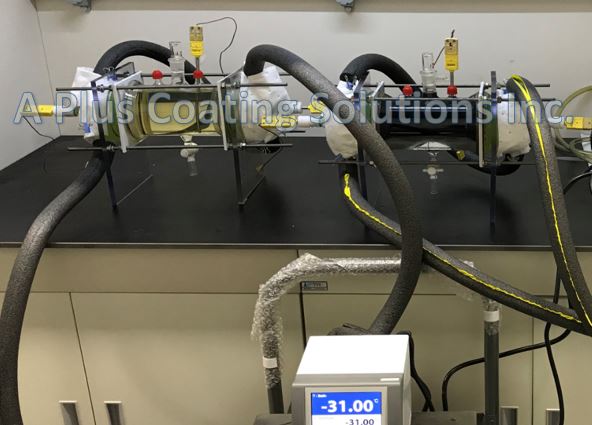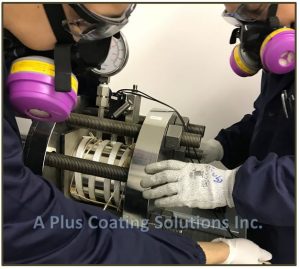Atlas Cell testing is a well-known method for evaluating internal linings. The test is designed to determine the performance and suitability of internal protective coatings or linings for oilfield production application, such as separator vessels, storage tanks, gas knockout drums, and treaters, etc. The test can also be used to rank and pre-screening linings for particular service environments prior to field use. The test evaluates not only the chemical compatibility of a coating with the production environment but also the resistance of the coating to the “cold wall effect”. Cold wall effect is a phenomenon that is often observed in the oil and gas industry, where external steel surface temperature is lower than the inside temperature of the vessel or tubing, a thermal gradient exists. This temperature difference will cause condensation of the water on the steel and attack the bonding of the coating or lining at the interface. This causes blistering, disbondment, and loss of adhesion in coatings or linings that is not evident in a simple chemical immersion test at the same test temperature and pressure.
When service conditions are not associated with pressure, the Standard Atlas Cell (SAC) test is designed to fit your needs. The schematic drawing below illustrates the setup of our SAC test. As presented in the figure, the coating side of the test panels is assembled facing the internal of the test vessel. The internal temperature of the vessel is controlled by a heating element that is connected to a temperature controller and the external temperature of the vessel is controlled by circulating heating or cooling fluid at both ends of the jackets. By doing so, the thermal gradient of the test is controlled.

The Pressurized Atlas Cell test is a modified Atlas test, which is designed to simulate oilfield separator vessels or pipelines where the service environments combine the effect of the cold wall and mild pressure (up to 2000 psi). The test vessels are constructed with corrosion resistant metal, so the most common oilfield corrosives (CO2 and H2S) can also be fairly evaluated in this test.

Test methods for the Atlas Cell tests are available in:
- NACE TM 0174 Laboratory Methods for the Evaluation of Protective Coatings and Lining Materials on Metallic Substrates in Immersion Service (Procedure A: One-Side Testing)
- ASTM D6943 Standard Practice for Immersion Testing of Industrial Protective Coatings and Linings (Note this standard replaced ASTM C868)
- Custom tests can be designed to meet special service conditions
Test Samples:
6″ × 6″ one side coated steel plates for Standard Atlas Cell test
8″ × 8″ one side coated steel plates for Pressurized Atlas Cell test
